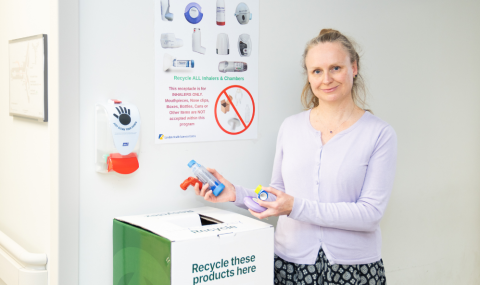INTRACRANIAL PRESSURE MONITORING: TROUBLESHOOTING
| My patient's ICP has increased, but is not responding to drainage. What could cause this problem? |
1. The stopcock could be open to pressure monitoring but closed to drainage.
- Check all stopcocks. Ensure that all stopcocks are open to both the drainage unit and to the patient catheter (the system is open in any direction where one of the stopcock "prongs" are pointed).
2. The drainage unit could be positioned higher than the pressure in the patient's head.
-
Ensure that the "0" on the drainage unit panel is positioned at the external auditory canal, and the arrow on the drainage collecting chamber is positioned at the correct position above the head.
-
Note that drainage will only occur if a) the system is open, and b) the ICP exceeds the level of the drainage unit. For example, if the unit is positioned at 10 cmH20 above the patient's head (which is equal to 7.4 mmHg), the ICP must be higher than 10 cmH20 (or higher than 7.4 mmHg on the bedside monitor) before drainage will occur.
-
NOTE: To ensure that the ICP measurement obtained is accurate, the ICP reading should be taken when the stopcock is closed to drainage and open between the pressure system and the patient catheter. Pressure measurements that are obtained when the stopcock is opened to both drainage and monitoring can be inaccurate (they would reflect a blended pressure from both the patient catheter AND the drainage bag versus an ICP from the patient catheter alone).
3. The catheter may be blocked.
-
To check for catheter patency, lower the drainage chamber below the patient's head (ensuring that the drainage system remains vertical). If the catheter is patent, CSF drainage should occur.
-
Evaluate the ICP waveform.
-
Ensure that an appropriate scale is selected to ensure good visibility of the waveform.
-
If the catheter is patent, a crisp waveform should be present; the waveform should demonstrate pressure changes that correspond to the heart rhythm.
-
A flat waveform suggests that the catheter is not patent. Note that if the ICP increases significantly, brain edema could obstruct the catheter tip and impair waveform transmission.
-
To confirm that an increase in the ICP accurately reflects raised intracranial pressure, observe the patient for other findings that support the ICP reading such as: bradycardia, hypertension or pupillary dilation.
-
ScvO2 measured from an IJ catheter may occur if cerebral blood flow is reduced and brain oxygen demand is high. As brain cells die, brain cells may be unable to extract oxygen and an abnormally high IJ oxyen saturation. In this case, the IJ saturation may reflect information that would be obtained if jugular venous bulb oxygen saturation was known (SjO2).
4. The ICP elevation may be the result of severe brain swelling, but the ventricles are either empty or collapsed.
NOTE: If the cause of the problem is either #3 or #4, the problem requires medical intervention (i.e. catheter flushing or medical intervention to treat the ICP).
|
Brenda Morgan
Clinical Nurse Specialist, CCTC
Updated: January 15, 2019, Reviewed April 12, 2022
-
-


